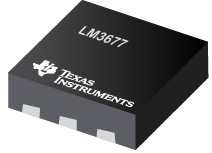LabVIEW Embedded Platform extended to Support New Analog Devices Blackfin, Freescale ColdFire Processors

National Instruments has announced the extension of the NI LabVIEW 8.5 graphical system design platform to new embedded targets with the release of the NI LabVIEW Embedded Module for ADI Blackfin® Processors 2.5 and the LabVIEW Microprocessor SDK (Software Development Kit) 2.5. With a graphical system design approach, engineers and scientists can use LabVIEW to rapidly design and prototype their embedded systems and easily deploy them to targets such as 32-bit processors and FPGAs. The latest versions of the LabVIEW Embedded Module for Blackfin Processors and the LabVIEW Microprocessor SDK expand the available deployment options for engineers and scientists by adding support for new, high-performance convergent multimedia Blackfin processors as well as introducing support for the Freescale ColdFire processor. The software packages also deliver 18 percent increased efficiency in code generation.
The LabVIEW Embedded Module for Blackfin Processors seamlessly integrates LabVIEW 8.5 and ADI VisualDSP++ ® 5.0 to deliver an out-of-the-box embedded programming experience. The combination of the LabVIEW graphical development environment and high-performance, low-power Blackfin processors helps engineers rapidly develop sophisticated embedded systems ranging from cutting-edge medical devices to subsea monitoring systems while optimising costs and shortening time to market.
“We needed to quickly design a gas pipeline monitoring system that could meet our specific requirements for physical size and power consumption while offering the performance needed to run sophisticated control applications,” said Harald Månum, Senior Engineer at NAXYS, a Norwegian company that develops and produces specialised subsea instruments for seabed oil and gas installations. “By combining the graphical system design approach of the LabVIEW embedded platform and the performance of ADI Blackfin processors, the NAXYS team was able to get the stability, versatility, performance and battery life we needed to meet both our quick time-to-market and quality requirements.”
The latest version of the LabVIEW Embedded Module for Blackfin Processors adds support for the ADSP-BF54X family of processors, which provide on-chip peripheral interfaces for several user interface elements such as a keypad, scroll wheel and touch panel display. The LabVIEW Embedded Module for Blackfin Processors 2.5 further simplifies embedded system development by introducing a drag-and-drop interface to help engineers easily access Blackfin peripherals, significantly decreasing the time required to incorporate I/O into applications. Additionally, the module adds new drivers for digital I/O, counters and timers, interrupts and a real-time clock.
With the LabVIEW Microprocessor SDK, engineers can develop and deploy LabVIEW code to any 32-bit embedded processor. Using the latest version of the software package, they can now target the Freescale ColdFire processor with the uClinux embedded operating system in addition to the previously supported processor architectures of ARM7, TI c6000, PowerPC, x86 and XScale. The LabVIEW Microprocessor SDK 2.5 also adds a background TCP/IP debugging capability that makes it easy for engineers to debug their applications while maintaining real-time performance.
Both the LabVIEW Embedded Module for Blackfin Processors 2.5 and the LabVIEW Microprocessor SDK 2.5 are compatible with the recently introduced LabVIEW Statechart Module, which provides engineers with a high level of abstraction for designing applications using states, transitions and events. By combining the LabVIEW Statechart Module with the latest versions of the LabVIEW Embedded Module for ADI Blackfin Processors and LabVIEW Microprocessor SDK, engineers can easily build applications with statecharts and deploy them to embedded processors.
The LabVIEW Embedded Module for Blackfin Processors and the LabVIEW Microprocessor SDK are part of the LabVIEW embedded platform, a family of National Instruments products that provides domain experts with a complete software programming environment and a range of deployment targets such as custom processors, real-time industrial controllers and FPGAs for the development of embedded systems.
Similar articles
More from NI-Emerson
- NI Week: Wireless devices end manual data collection. 23rd May 2019
- Application software aids operational efficiency 9th May 2018
- Design software customises device tests 23rd January 2018
- Devices collect synchronised data in severe environments 13th December 2017




 technology at Jacobs Vehicle Systems.JPG)







Write a comment
No comments